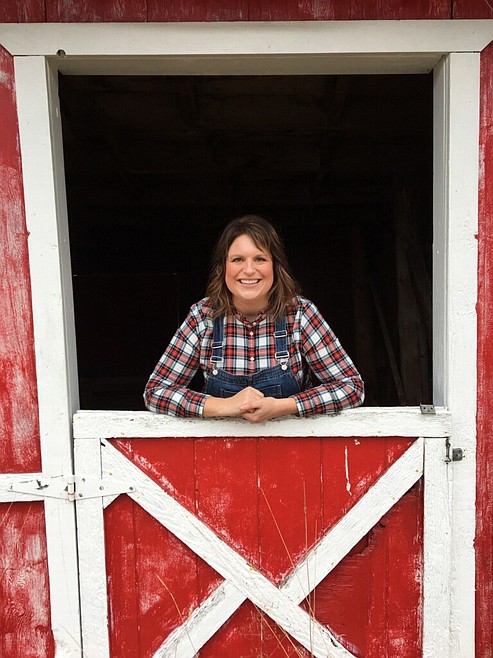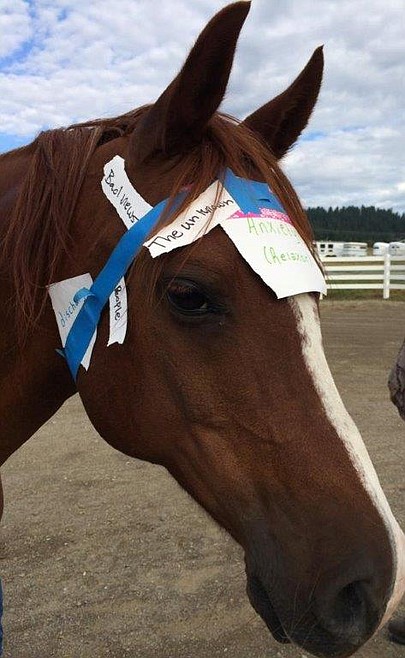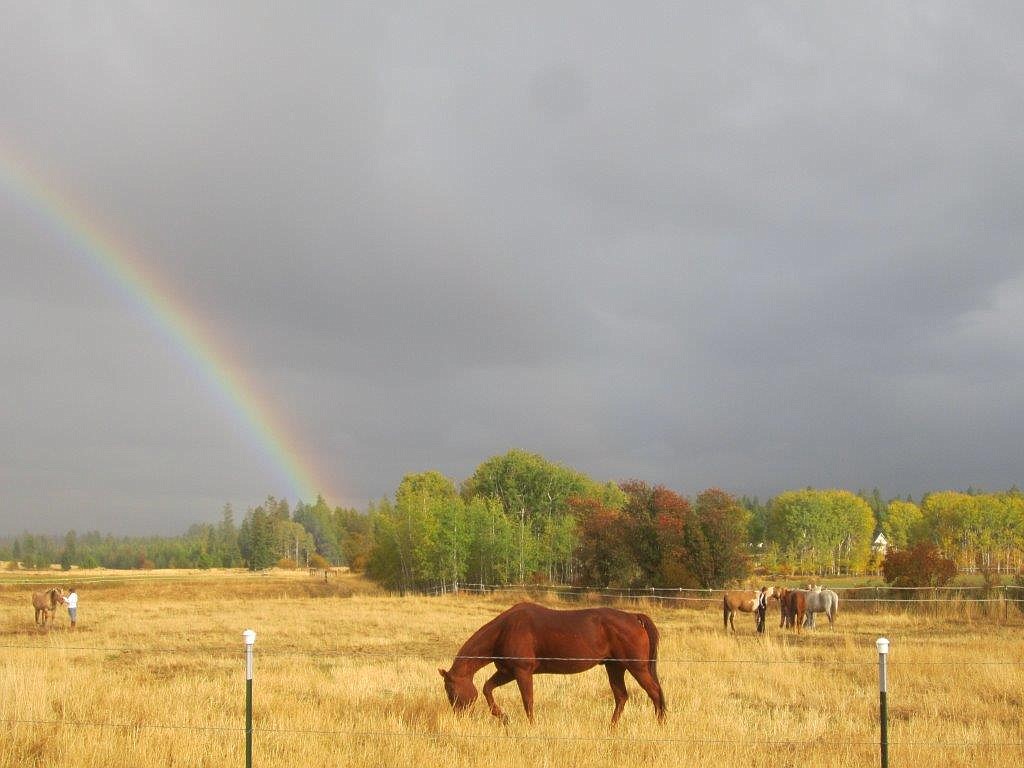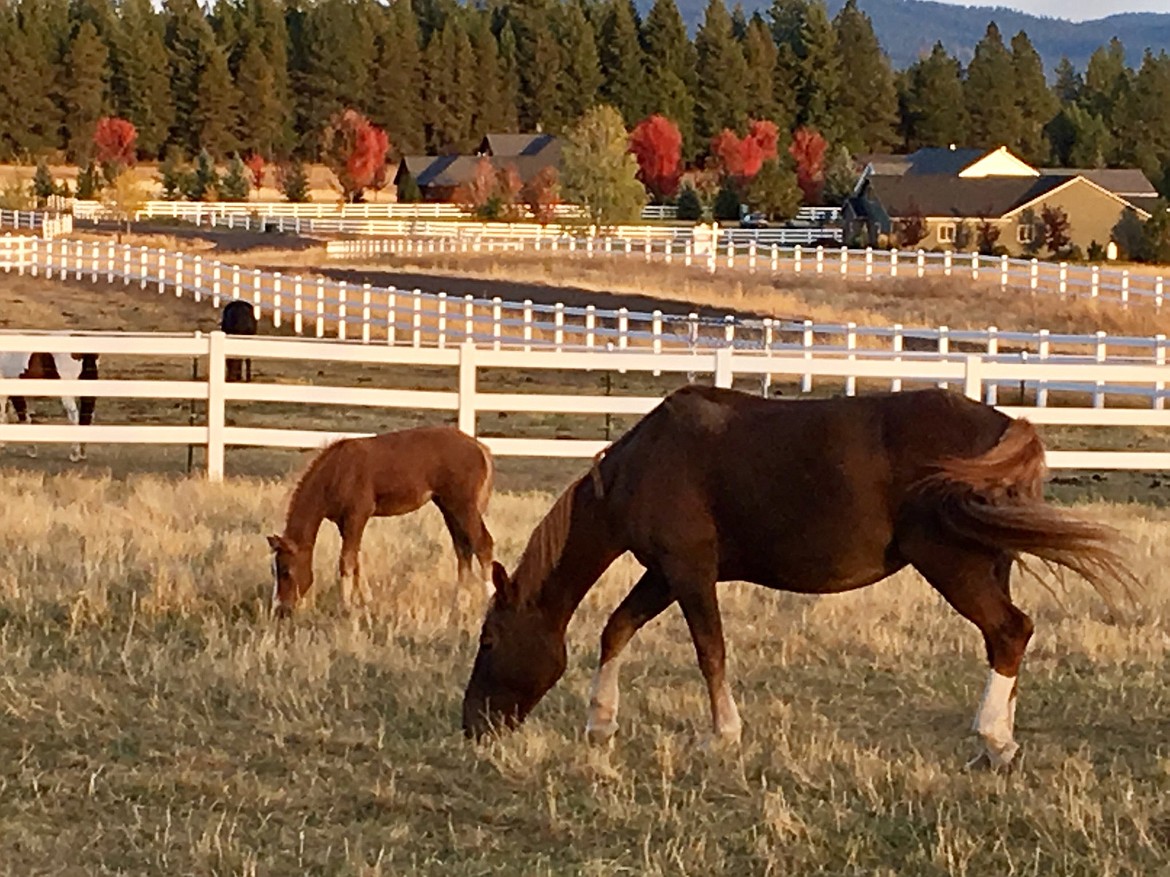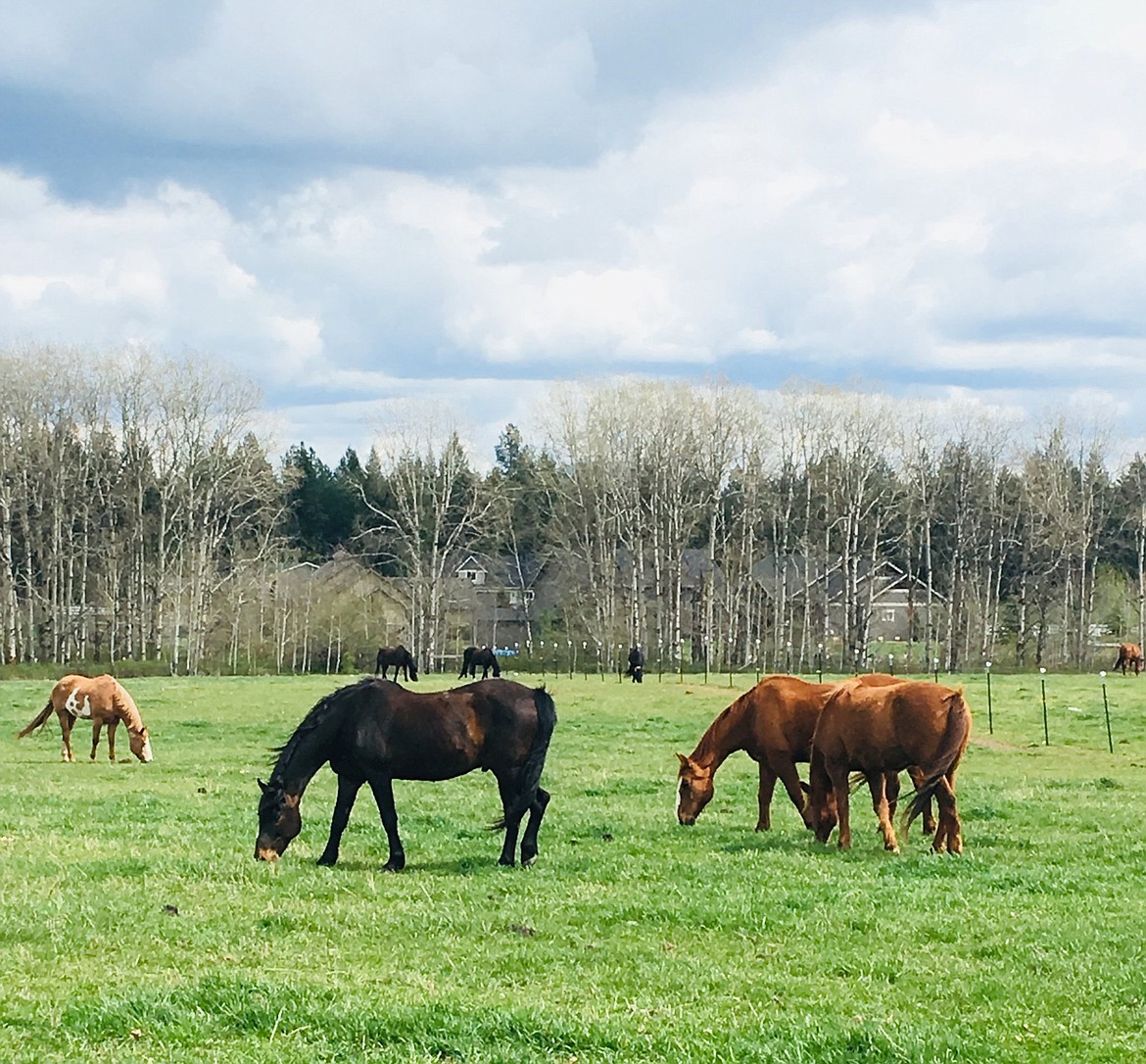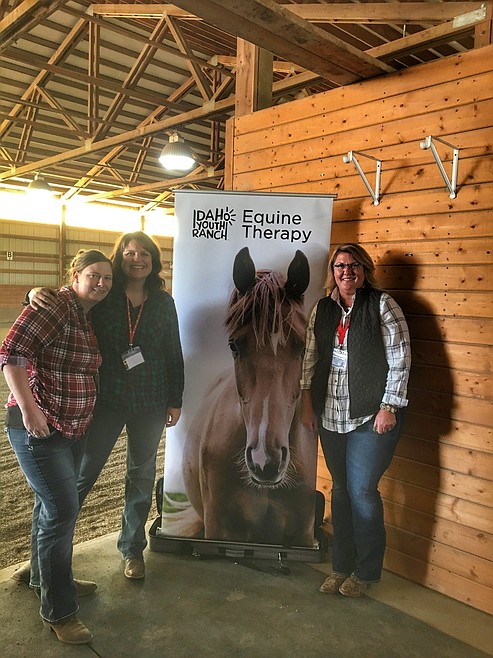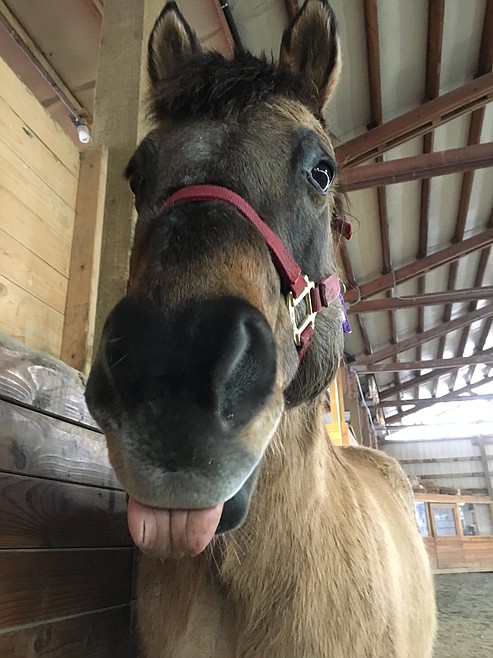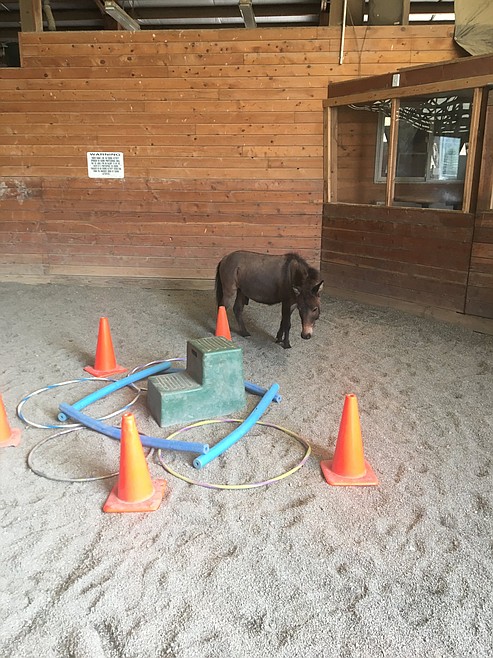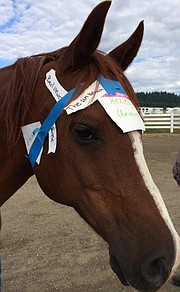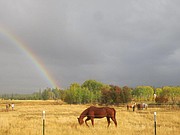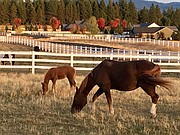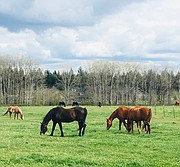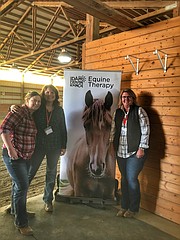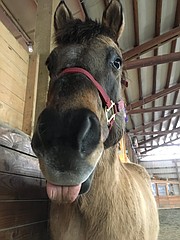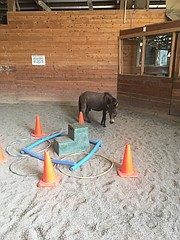Taking the reins: Equine Assisted Psychotherapy
When Idaho Youth Ranch was approached to start an equine-assisted therapy program seven years ago, Amanda Smith, then-therapist for the nonprofit, was eager to be part of it.
“I had my own horse growing up, Chester,” said Smith. “I know the impact that Chester had on my life and my family’s life.”
Now Smith manages the Equine-Assisted Psychotherapy Program at Idaho Youth Ranch, after receiving her certification from the Equine Assisted Growth and Learning Association (Eagala), an international equine psychotherapy model and organization which first approached the Ranch.
It was a perfect opportunity for Idaho Youth Ranch, which started as a ranch program alternative to youth incarceration or institutionalization in Rupert, Idaho.
Equine-assisted psychotherapy is much what it sounds like: a form of emotional therapy in which horses play a role.
Unlike therapeutic riding, clients don’t learn to ride horses, but instead engage in therapeutic work “with the horses front and center… and allowed to interact with the clients as they wish,” according to the Eagala website.
The approach, founded in 1999, isn’t just about the horses. As a “client-centered” and “solution-oriented” model, clients are in charge of directing their own therapy and setting their own goals.
“Eagala's model is based on the belief that all clients if given a safe space and [the] opportunity… can come up with their own solutions and their own answers,” said Smith.
According to a 2019 Psychology Today article, common benefits of EAP include an increase in trust, self-confidence and self-efficacy, a stronger positive identity, a reduction in anxiety and depression, improved impulse regulation, and stronger social skills.
Of course, it is about the horses, too. While bonds with any animal can prove therapeutic and help to improve psychological outcomes, there are a few reasons equine-assisted therapy has grown in the past decade, particularly after President Obama allocated funds to use EAP for veteran rehabilitation in 2010.
For one thing, horses are big. Though it may seem counterintuitive to start out therapy with an animal some find intimidating, that’s actually a benefit.
Learning to trust – and be trusted by – a large, but intelligent animal also helps reinforce self-confidence and their unconditional acceptance is especially beneficial for those struggling with depression.
Psychologists say the need to communicate with a horse calmly and non-reactively promotes the skills of emotional awareness, emotion regulation, self-control, and impulse modulation.
The thousand-plus pound animal can’t be ignored or trifled with, but that also means apprehensive clients have an extra “win” as they learn to get comfortable, says Smith.
“Whether that takes ten minutes or that takes three sessions before they get in the space with the horse, there's that initial success of feeling good,” she said.
Horses are also herd animals and, like humans, have their own personalities.
“They all have a role to play in that family, in that herd.”
Just as in human groups, Smith says, herds have their own leaders, mother types, nags, loners, clowns, etc.
“The group dynamics of a herd are such human dynamics of groups that it's just so relatable and we can use it therapeutically.”
And as prey animals, horses also exhibit a lot of the same characteristics as many people who have experienced trauma, Smith says. They’re vigilant of their surroundings, are sensitive to being cornered, may turn on a dime, and their respect has to be earned.
For many clients at Idaho Youth Ranch’s program, these commonalities are beneficial.
“[So many clients] can relate to that and they see those symptoms in the horse and very much go, “'Oh, that’s just like me.’”
Idaho Youth Ranch sees clients from ages nine to 24 who are referred to them for different reasons, but it’s not unusual for young clients – or people in general, Smith says – to have also experienced trauma.
So when horses display similar responses to stimuli, it can feel familiar.
But what does equine-assisted psychotherapy look like?
Although EAP is still psychotherapy and involves trained mental health providers, it’s also experiential, which means clients aren’t lying on couches – or in barns.
Instead, clients do different activities with a horse or horses (with a mental health provider and equine specialist present) as part of working through a therapeutic plan.
“It’s all done on the ground, and we’re lucky enough to use multiple spaces so we can use pastures, indoor arenas, outdoor arenas, a round pen,” said Smith.
Clients create their own treatment plan goals with their treatment team – which may be family, a probation officer, or even football coach – and participate in therapy individually, with their family, or in a group session with other clients.
Once a week for an average of three to four months, a client comes in with the mental health provider, equine specialist, and horse.
“So how that really works then is that through different activities, or different paths, different observations, clients are going to have their own story play out with the horse,” said Smith.
“And that happens ultimately by anything in the space.”
Kids may be given prompts such as creating scenes from their life, or may be asked to create a space that looks like their emotions. Using props like hula hoops, sticky notes, bandanas, or cones, clients create and involve the horse(s) in some way – perhaps by involving them or introducing them to the scenes and spaces they create.
One client who was using drugs and involved with the gang lifestyle created a “snapshot” of his future by dressing horses in bandanas and lining them up, only to turn his back and walk away – the moment when he will choose to move on from his lifestyle and his friends who were still using and getting into trouble.
“So if you can picture it, there’s a young man who’s walking away from these horses that are wearing gang paraphernalia basically with their bandanas and rags, who were standing at the fence line watching him go.
“Those become really metaphors and symbols that the clients are going to project their story, their interpretation of life, their perspective of things onto the horse and onto those objects.”
Clients may also be asked to observe the herd – using those human-like personalities to reflect on people in their life.
Certain herd members may resemble family members or other significant people in children’s lives, living or dead.
“I think one of the most powerful moments that I've had with that kind of activity was a young lady who was in therapy because her father had passed away… The client identified that one of the horses really reminded her of her dad,” Smith said.
“The horse became her dad in session. A lot of that practicing of grief and loss and all of those unanswered questions, and all of that seeking closure and just wanting that connection with her dad who was gone really happened because she had identified that this horse was her dad.”
Part of the therapy is interpretation and the individual “story” clients will identify.
For example, in a group therapy session, Smith said, clients created spaces representing their anger and then introduced the horses to those spaces.
Horses kicking at physical obstacles became metaphors for how frustrated clients were with their own real-life obstacles, and their curiosity was a reminder to be more open.
“The horse had put his little nose in that space and was sniffing it,” said Smith, “and [the client said] ‘It’s really curious about how I’m feeling, because I just bottle it all up… and it just really wants me to know it’s okay to say how I feel.’”
It’s about the projection and the story.
Clients are invited, but not required, to share their experiences, observations, or creations. They also get to name the horses they work with.
Donna Findlay and the Mica Foundation have “donated” their horses and use of the Mica Meadows ranch outside of Coeur d’Alene to work with clients.
About 20 to 30 horses work with the kids, but as a single horse may go by “Oreo,” “Princess,” or “Brownie” at the same time, Smith says it’s difficult to keep track without checking records.
“The herd changes. We like to help horses have an awesome experience being part of the program. I don’t think Donna and her ranch team say no very often so we have a lot of horses we are very blessed to use in our program.”
In the last fiscal year (ending in July), the EAP at Idaho Youth Ranch served 51 youths and their families.
After completing their therapy goals kids are given a big sendoff and often a memento to take with them, such as a horseshoe or framed picture.
As part of Idaho Youth Ranch’s forever family, they’re also welcome to come back for a visit, or a “booster session” if they feel they need it.
“Just the connection and the bond, there’s nothing like it,” said Smith. "To be able to share that with other people and be a part of it as a counselor, to be able to incorporate that in my work, is thrilling."

